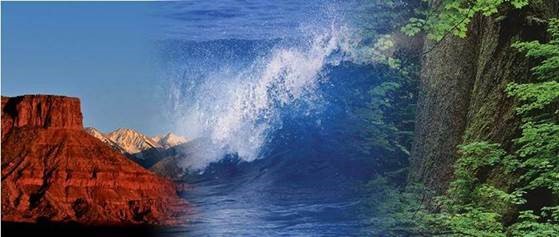
Faculty Publications
Document Type
Article
Abstract
Detailed three-dimensional polygonal prism models of two large western Pacific seamounts show that the 135 mgal difference in the observed sea surface gravity over the two can be best explained by similar mean densities (2.6 gjcm3) and crustal thickening under one seamount (Airy isostatic compensation). Observed calculated residuals are further reduced by including dense (2.9 gjcm3) vertical feeder pipes or volcanic conduits in the models. Dense conduits or fracture zones 5 to 17 km in diameter are located under many, if not all, craters on volcanic islands and seamounts. Results from the detailed seamount studies can be generalized using exact expressions for the on-axis vertical component of gravity for cones or frustrums of cones. Seamount isostatic compensation levels can then be rapidly estimated by iteratively inverting the on-axis gravity. The estimation algorithm is independent of mechanical assumptions regarding oceanic lithosphere and is particularly useful for the rapid evaluation of large data sets. The results and associated uncertainties are comparable to those of the detailed three-dimensional models and frequency domain studies. As predicted by cooling plate models, the estimated Airy (local) compensation levels p. for seamounts are inversely proportional to the root ofthe seafloor age at the time of loading t: p.(%) = 68 -5.6t1/ 2• A map of depth-corrected on-axis gravity values for western Pacific seamounts indicates that seamounts with similar p. 'fBlues tend to form clusters.
Publication Info
Published in Geophysical Monograph Series, ed. B. H. Keating, P. Fryer, R. Batiza, G. W. Boehlert, Volume 43, 1987, pages 85-96.
Rights
Kellogg, J. N., Wedgeworth, B. S., & Freymueller, J. T. (1987). Isostatic compensation and conduit structures of Western Pacific seamounts: Results of three-dimensional gravity modeling. Seamounts, Islands, and Atolls, 43, 85-96.
©Geophysical Monograph Series 1987, American Geophysical Union

